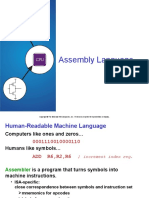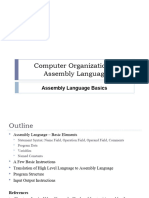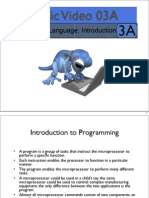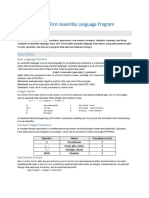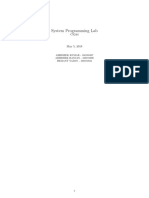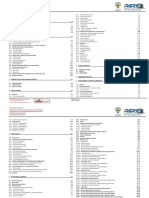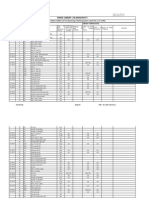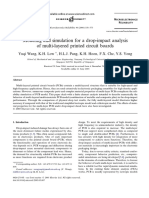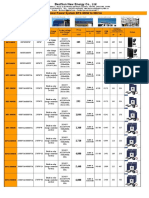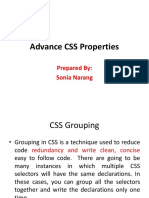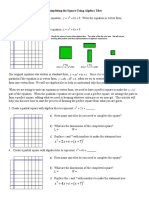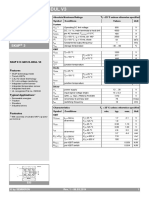Because learning changes everything.
From Bits and Gates to C and Beyond
Assembly Language
Chapter 7
© 2020 McGraw Hill. All rights reserved. Authorized only for instructor use in the classroom.
No reproduction or further distribution permitted without the prior written consent of McGraw Hill.
� Human-Friendly Programming
Computers need binary instruction encodings...
0001110010000110
Humans prefer symbolic languages...
a = b + c
High-level languages allow us to write programs in clear, precise
language that is more like English or math. Requires a program
(compiler) to translage from symbolic language to machine instructions.
Examples: C, Python, Fortran, Java, ...
We will introduce C in Chapters 11 to 19.
© McGraw Hill 2
� Assembly Language: Human-Friendly ISA Programming
Assembly Language is a low-level symbolic language, just a short step
above machine instructions.
• Don't have to remember opcodes (ADD = 0001, NOT = 1001, ...).
• Give symbolic names to memory locations -- don't have to do binary
arithmetic to calculate offsets.
• Like machine instructions, allows programmer explicit, instruction-level
specification of program.
Disadvantage:
Not portable. Every ISA has its own assembly language.
Program written for one platform does not run on another.
© McGraw Hill 3
� Assembly Language
Very similar format to instructions -- replace bit fields with symbols.
For the most part, one line of assembly language = one instruction.
Some additional features for allocating memory, initializing memory
locations, service calls.
Numerical values specified in hexdecimal (x30AB) or decimal (#10).
Access the text alternative for slide images.
© McGraw Hill 4
� Example Program
Access the text alternative for slide images.
© McGraw Hill 5
� Assembly Language Syntax
Each line of a program is one of the following:
• An instruction.
• An assember directive (or pseudo-op).
• A comment.
Whitespace (between symbols) and case are ignored.
Comments (beginning with “;”) are also ignored.
An instruction has the following format:
Access the text alternative for slide images.
© McGraw Hill 6
� Mandatory: Opcode and Operands
Opcodes
Reserved symbols that correspond to LC-3 instructions.
Listed in Appendix A and Figure 5.3.
reserved means that it
• For example: ADD, AND, LD, LDR, … cannot be used as a label
Operands
• Registers -- specified by Rn, where n is the register number.
• Numbers -- indicated by # (decimal) or x (hex).
• Label -- symbolic name of memory location.
• Separated by comma (whitespace ignored).
• Number, order, and type correspond to instruction format.
ADD R1,R1,R3 ; DR, SR1, SR2
ADD R1,R1,#3 ; DR, SR1, Imm5
LD R6,NUMBER ; DR, address (converted to PCoffset)
BRz LOOP ; nzp becomes part of opcode, address
© McGraw Hill 7
� Optional: Label and Comment
Label
• Placed at the beginning of the line.
• Assigns a symbolic name to the address corresponding to that line.
LOOP ADD R1,R1,#−1 ; LOOP is address of ADD
BRp LOOP
Comment
A semicolon, and anything after it on the same line, is a comment.
Ignored by assembler.
Used by humans to document/understand programs.
Tips for useful comments:
• Avoid restating the obvious, as “decrement R1.”
• Provide additional insight, as in “accumulate product in R6.”
• Use comments and empty lines to separate pieces of program.
© McGraw Hill 8
� Assembler Directive
Pseudo-operation
• Does not refer to an actual instruction to be executed.
• Tells the assembler to do something.
• Looks like an instruction, except "opcode" starts with a dot.
Opcode Operand Meaning
.ORIG address starting address of program
.END end of program
.BLKW n allocate n words of storage
.FILL n allocate one word, initialize with value n
.STRINGZ n-character allocate n+1 locations, initialize
string w/characters and null terminator
© McGraw Hill 9
� Sample Program: Counting Occurrences in a File
Once again, we show the program that counts the number of times (up to
nine) a user-specified character appears in a file.
Count = 0
(R2 = 0) YES
Convert count to
Done?
(R1 ?= EOT)
ASCII character
(R0 = x30, R0 = R2 + R0)
Ptr = 1st file character NO
(R3 = M[x3012])
Print count
YES Match? NO (TRAP x21)
(R1 ?= R0)
Input char
from keybd
(TRAP x23)
HALT
Incr Count (TRAP x25)
Load char from file (R2 = R2 + 1)
(R1 = M[R3])
Load next char from file
(R3 = R3 + 1, R1 = M[R3])
Access the text alternative for slide images.
© McGraw Hill 10
� Assembly Language Program 1
;
; Program to count occurrences of a character in a file.
; Character to be input from the keyboard.
; Result to be displayed on the monitor.
; Program only works if no more than 9 occurrences are found.
;
;
; Initialization
;
.ORIG x3000
AND R2, R2, #0 ; R2 is counter, initially 0
LD R3, PTR ; R3 is pointer to characters
TRAP x23 ; R0 gets character input
LDR R1, R3, #0 ; R1 gets first character
;
; Test character for end of file
;
TEST ADD R4, R1, #-4 ; Test for EOT (ASCII x04)
BRz OUTPUT ; If done, prepare the output
;
; Test character for match. If a match, increment count.
;
NOT R1, R1
ADD R1, R1, #1
ADD R1, R1, R0 ; Compute R0-R1 to compare
BRnp GETCHAR ; If no match, do not increment count
ADD R2, R2, #1
© McGraw Hill 11
� Assembly Language Program 2
;
; Get next character from file.
;
GETCHAR ADD R3, R3, #1 ; Point to next character.
LDR R1, R3, #0 ; R1 gets next char to test
BRnzp TEST
;
; Output the count.
;
OUTPUT LD R0, ASCII ; Load the ASCII template
ADD R0, R0, R2 ; Covert binary count to ASCII
TRAP x21 ; ASCII code in R0 is displayed.
TRAP x25 ; Halt machine
;
; Storage for pointer and ASCII template
;
ASCII .FILL x0030
PTR .FILL x4000
.END
© McGraw Hill 12
� Assembly Process
The assembler is a program that translate an assembly language (.asm)
file to a binary object (.obj) file that can be loaded into memory.
First Pass:
• Scan program file, check for syntax errors.
• Find all labels and calculate the corresponding addresses: the symbol table.
Second Pass:
• Convert instructions to machine language, using information from symbol
table.
Access the text alternative for slide images.
© McGraw Hill 13
� First Pass: Construct the Symbol Table
1. Find the .ORIG statement,
which tells us the address of the first instruction.
• Initialize location counter (LC), which keeps track of the current
instruction.
2. For each non-empty line in the program:
• If line contains a label, add label and LC to symbol table.
• Increment LC.
• NOTE: If statement is .BLKW or .STRINGZ, increment LC by the
number of words allocated.
3. Stop when .END statement is reached.
NOTE: A line that contains only a comment is considered an empty line.
© McGraw Hill 14
� First Pass on Sample Program (Comments Removed)
-- .ORIG x3000
x3000 AND R2, R2, #0
x3001 LD R3, PTR
x3002 TRAP x23
x3003 LDR R1, R3, #0 Label Address
x3004 TEST ADD R4, R1, #-4
x3005 BRz OUTPUT TEST x3004
x3006 NOT R1, R1
x3007 ADD R1, R1, #1 GETCHAR x300B
x3008 ADD R1, R1, R0 OUTPUT x300E
x3009 BRnp GETCHAR
x300A ADD R2, R2, #1 ASCII x3012
x300B GETCHAR ADD R3, R3, #1
x300C LDR R1, R3, #0 PTR x3013
x300D BRnzp TEST
x300E OUTPUT LD R0, ASCII
x300F ADD R0, R0, R2
x3010 TRAP x21
x3011 TRAP x25
x3012 ASCII .FILL x0030
x3013 PTR .FILL x4000
-- .END
© McGraw Hill 15
� Second Pass: Convert to Machine Instructions
1. Find the .ORIG statement,
which tells us the address of the first instruction.
• Initialize location counter (LC), which keeps track of the current
instruction.
2. For each non-empty line in the program:
• If line contains an instruction, translate opcode and operands to
binary machine instruction. For label, lookup address in symbol table
and subtract (LC+1). Increment LC.
• If line contains .FILL, convert value/label to binary. Increment LC.
• If line contains .BLKW, create n copies of x0000 (or any arbitrary
value). Increment LC by n.
• If line contains .STRINGZ, convert each ASCII character to 16-bit
binary value. Add null (x0000). Increment LC by n+1.
3. Stop when .END statement is reached.
© McGraw Hill 16
� Errors during Code Translation
While assembly language is being translated to machine instructions,
several types of errors may be discovered.
• Immediate value too large -- can't fit in Imm5 field.
• Address out of range -- greater than LC+1+255
or less than LC+1-256.
• Symbol not defined, not found in symbol table.
If error is detected, assembly process is stopped and an error message is
printed for the user.
© McGraw Hill 17
� Beyond a Single Object File
Larger programs may be written by multiple programmers, or may use
modules written by a third party. Each module is assembled
independently, each creating its own object file and symbol table.
To execute, a program must have all of its modules combined into a
single executable image.
Linking is the process to combine all of the necessary object files into a
single executable.
© McGraw Hill 18
� External Symbols
In the assembly code we're writing, we may want to symbolically refer to
information defined in a different module.
For example, suppose we don't know the starting address of the file in
our counting program. The starting address and the file data could be
defined in a different module.
We want to do this:
PTR .FILL STARTofFILE
To tell the assembler that STARTofFILE will be defined in a different
module, we could do something like this:
.EXTERNAL STARTofFILE
This tells the assembler that it's not an error that STARTofFILE is not
defined. It will be up to the linker to find the symbol in a different module
and fill in the information when creating the executable.
© McGraw Hill 19
�Because learning changes everything. ®
www.mheducation.com
© 2020 McGraw Hill. All rights reserved. Authorized only for instructor use in the classroom.
No reproduction or further distribution permitted without the prior written consent of McGraw Hill.


